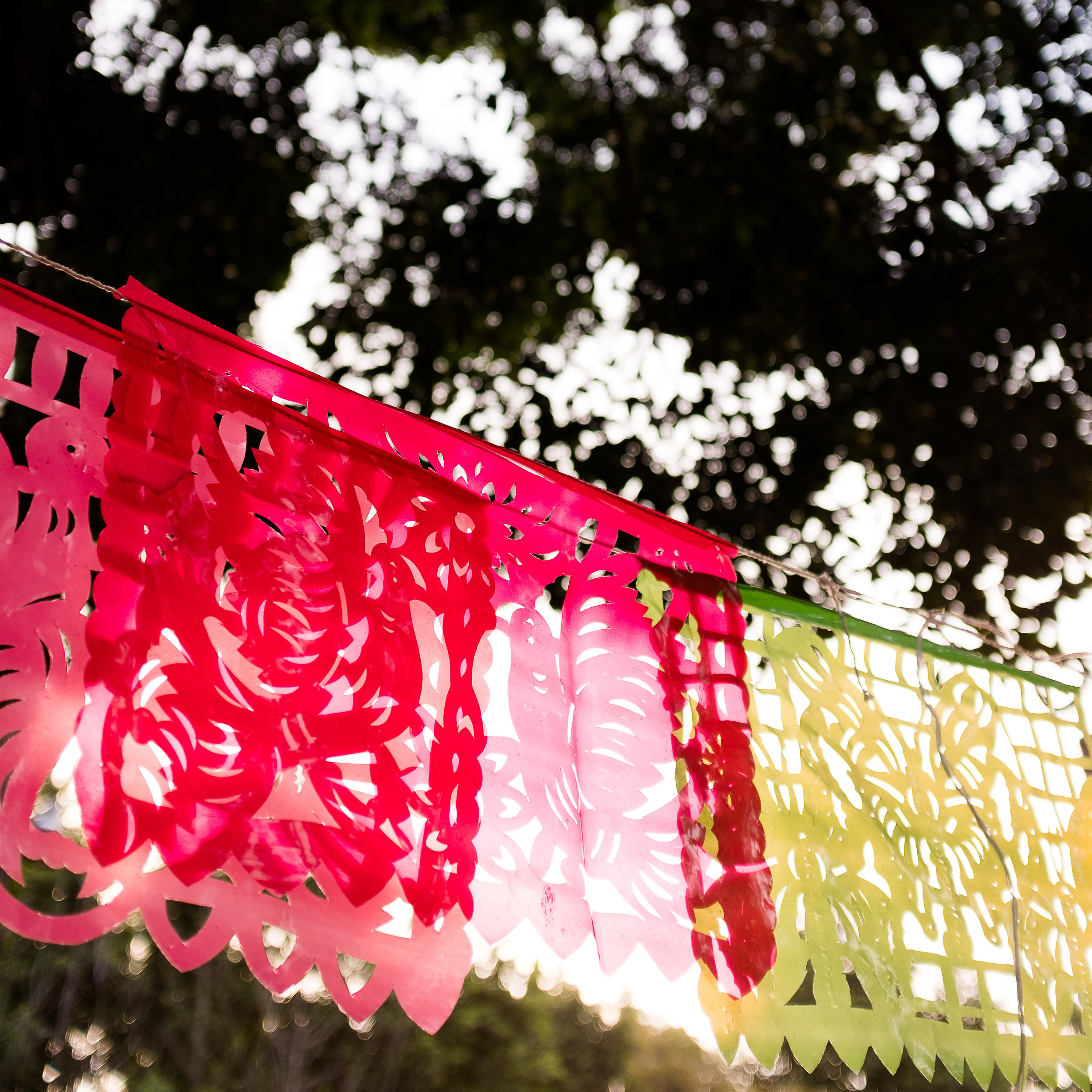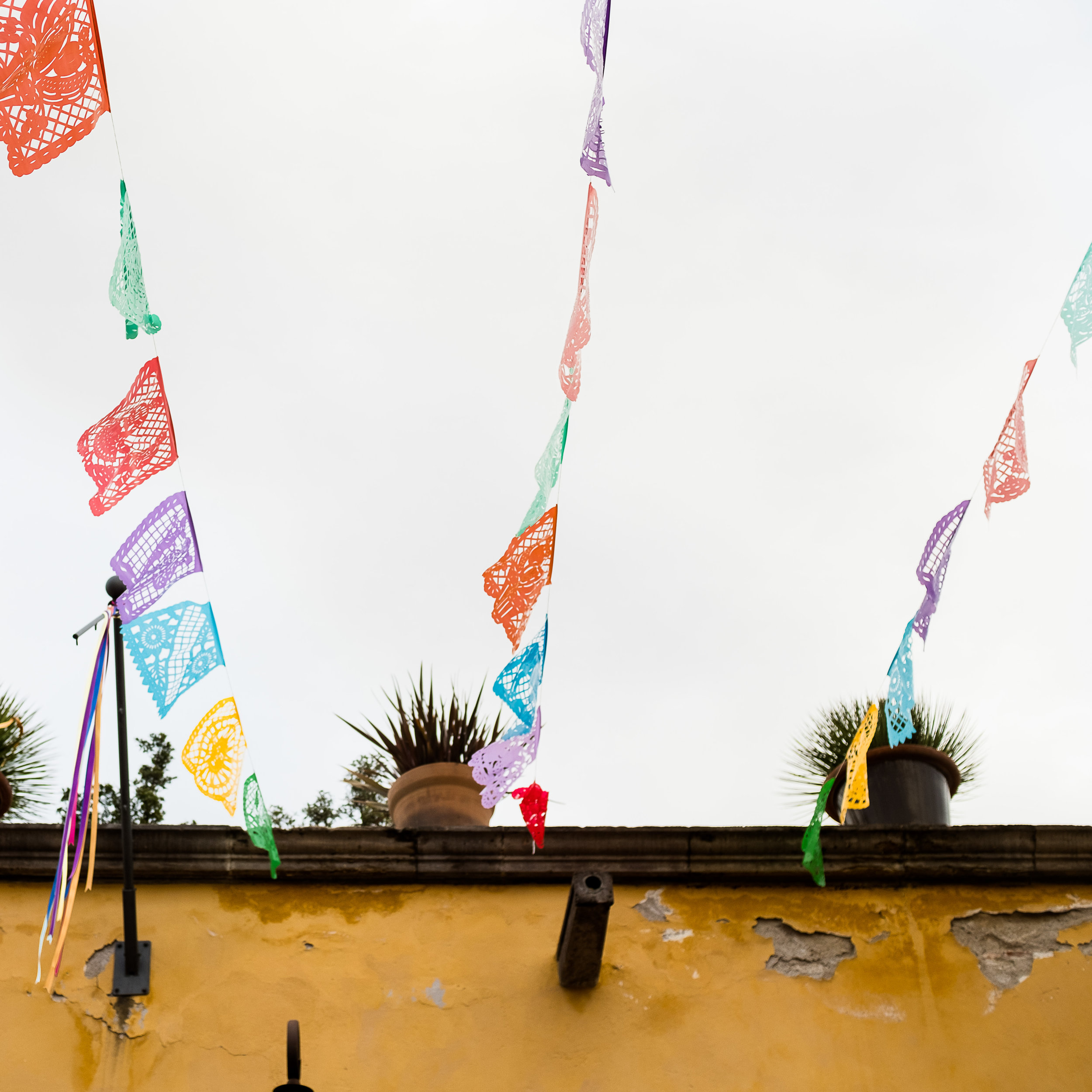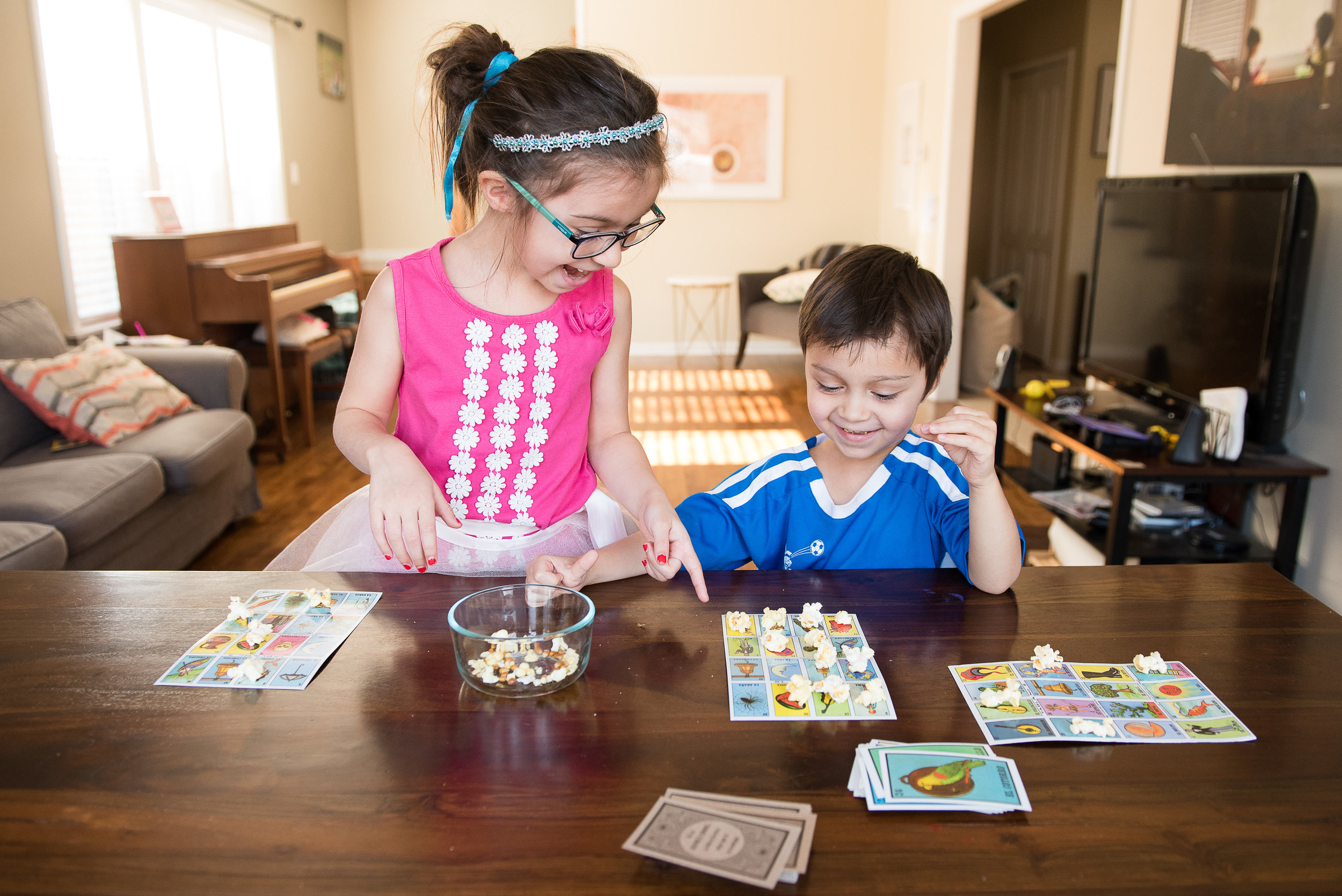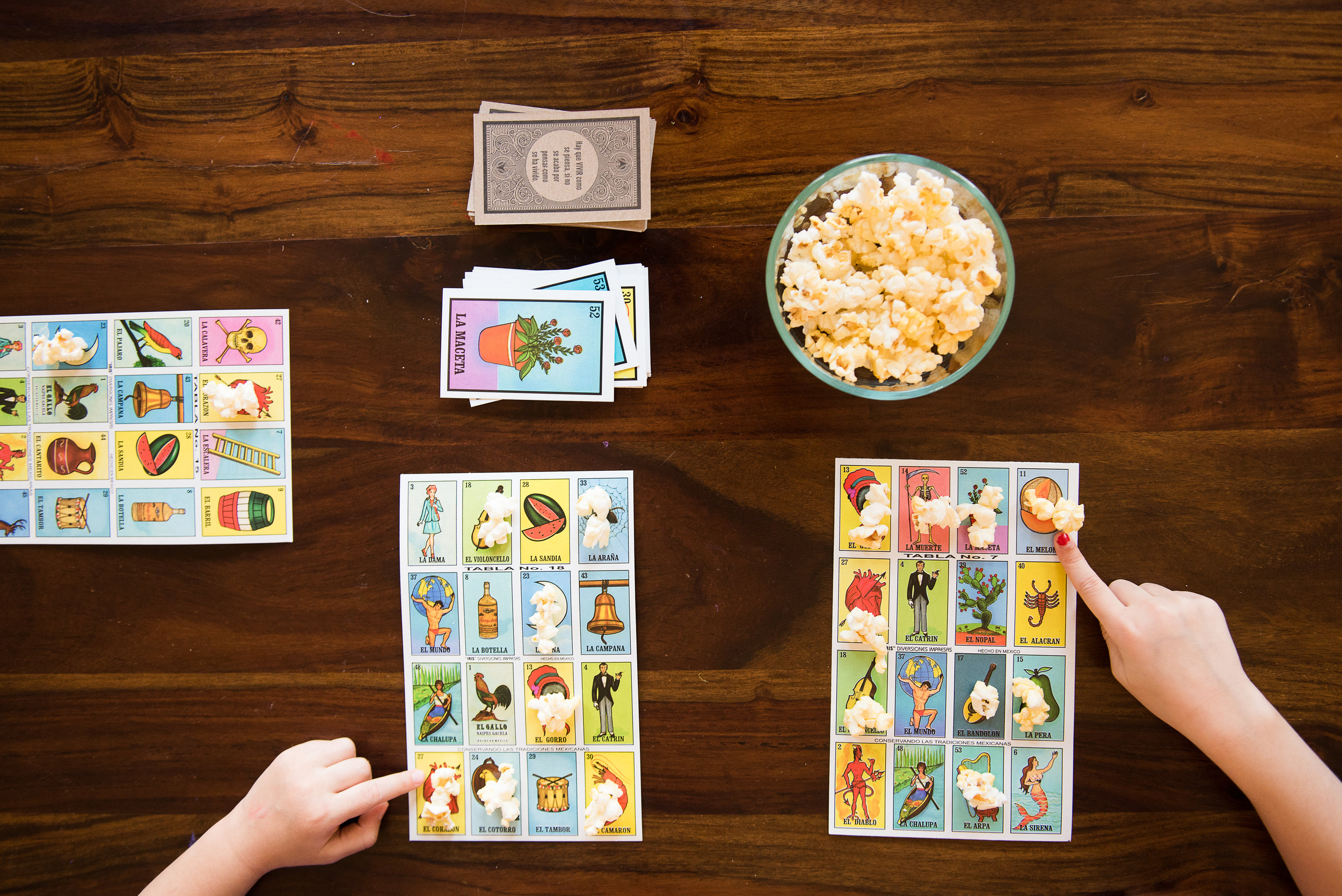If you've seen the movie Coco you've seen the decoration known as "Papel Picado" or "pecked paper". These paper banners are most commonly displayed for holidays or religious occasions like Easter, Christmas, Day of the Dead, quinceñeras, baptisms, weddings. It was breathtaking to see the whole Day of the Dead land in the movie Coco to be so vibrantly decorated with papel picado. It's not usual that I see something like that in the US.
Papel picado came about during the 19th century. It was typically made by hand using a chisel. First, an intricate design is drawn on paper and covered with plastic to protect the original drawing. To make several copies at once they stack many thin tissue paper sheets together and chisel the design out. The stack is then picked apart and hung on a string with other papers that have different designs. This is similar to the Chinese paper cutting, but rather than being cut with scissors, in Mexico they use chisel.
The art of Papel Picado is officially recognized by the ministry of Tourism and culture in Mexico. San Salvador Huixcolotla in Puebla is known as the center of papel picado, but in the 1930s the art spread to other parts in Mexico. It was in the 1960s that papel picado made it's way to the United States and Europe. Now you'll see this decoration made out of different materials like plastic of thicker paper so that it can withstand the outdoors, or be a more permanent and sturdy decoration.
I have a new print called Papel Picado that I'll offer this summer in a new collection. Here's a sneak peek of it. I'll be announcing a launch date soon, but until then, be thinking and planning where in your home this print would be perfect to hang.
If you're not on my e-mail list yet, sign up so you can be one of the first to know when the new collection launches. I'll also share when new events are happening, new blog posts are shared, and give exclusive promotions. So go ahead, enter your email. :-)



















